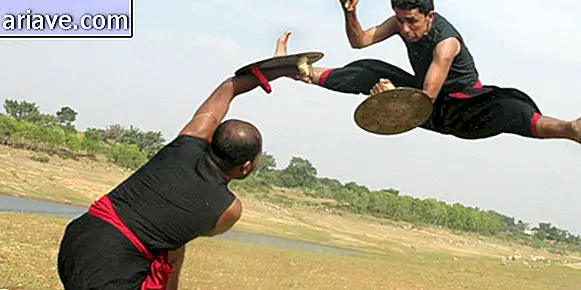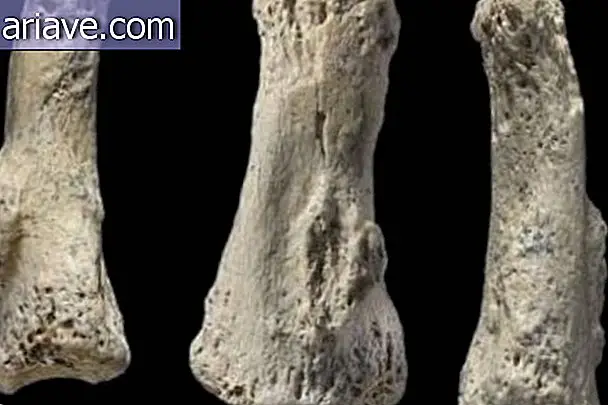Next Stop: Cape Verde - Travel through the enchanting islands of this beautiful country.
When the capital of a country is called Praia, you can expect good things from it. At today's Next Stop we will take an extremely enjoyable trip through Cape Verde, an island country that brings together a group of 10 volcanic islands - nine of which are habitable - and is located almost 600 km off the coast of West Africa. There, the official language is Portuguese, although Cape Verdean Creole is also spoken in the country.
With just over 530, 000 inhabitants, Cape Verde has a lot of European influence in its culture - the region was found by Portuguese explorers in the 15th century. The country's political system is semi-presidential, that is: there is a president (Jorge Carlos Fonseca) and also a prime minister (José Maria Neves). The currency is the Cape Verdean shield and the official religion is the Catholic.
As the region of the tropics was primarily occupied by Europeans, it can already be imagined that the region served as a source of human exploitation through the slave trade - even because it was a stopping point for explorers sailing between Europe, Australia and India. It was not until 1975 that Cape Verde became independent of Portugal.
Geographic and economic issues

Today the country can already exploit its tourism potential, and the local economy is largely dependent on it. The weather is warm most of the year, and Cape Verde's natural landscape makes the country a beautiful setting.
Since you are among an archipelago of volcanic islands, you may be wondering if there are no volcanoes in Cape Verde. Currently, there is an active volcano in the country on the island of Fogo, which is also the highest point in the region - it is almost 3, 000 meters high! Peak of Fire, as it is known, last erupted 20 years ago.

Of the ten islands that make up the country, only Santa Luzia is not inhabited. The other nine are divided into two groups: the Barlovento Islands to the north; and the Leeward Islands to the south. The capital Praia is on the southwest island of Santiago. Another large island is Santo Antão in the northwest.
The country has already been ranked 8th among those who suffer most from global warming. Rain is a rare thing there, and residents feel on their skin what it is to not have clean drinking water easily. In addition, the region is often affected by floods. It usually rains between August and October, but much less than would be necessary. There, the seasons are not defined and the average temperature is usually between 20ºC and 25ºC.
Culture and tourism

The country's cultural issue reflects the mix between African and European influences, which are part of its history. It can even be said that Cape Verdean culture is a type of hybrid product, resulting from the crossing of information from both continents.
One of the archipelago's most prominent fields is undoubtedly music. There, Carnival is taken seriously and the musical events gave the country the nickname "Brazilim", something like "little Brazil". Among the genres themselves, the morna, quizomba, funaná, coladeira and batuque stand out. One thing is certain: music, there, is not lacking!

Among the internationally known names we can mention the one of the singer Cesária Évora, who is affectionately called the “barefoot diva”. We can also talk about Sara Tavares and Lura, two other names recognized in different parts of the world.
Besides music, Praia is ideal for those who like historical landscapes. The city is the largest island of Santiago, which was the first of the archipelago to be colonized. The total area of this island is almost 1, 000 km², ideal for mountaineering sports enthusiasts. Already the maritime region is rich for those looking for a good place for diving.

For those who are more urban, we recommend Alexandre Albuquerque Square, which is in the center of Praia. There, residents and tourists gather in the late afternoons, ensuring a harmonious climate for those seeking greater contact with residents. For shopping, it is worth checking the Sucupira Fair, which sells various products related to African culture.
Be sure to stroll along Avenida Amílcar Cabral. It is full of cafes and shopping centers, with beautiful gardens and agricultural markets. If you want to take in the local festivities, plan your visit for May 19th. On this date, the day of the city of Praia, begins three nights of celebration, with various musical performances.

The most famous beach of the island is between Praia and Tarrafal. It is advisable to drive the 70 km separating the far south and north to take in the breathtaking view.
Also be sure to visit the Old City, which today is considered a World Heritage Site - the region was elected one of the 7 Portuguese Wonders in the World. In Old Town, you will see buildings that have been there since the 16th century.
And for eating?

Traveling to a different place and not trying typical dishes is almost a sin, so once you set foot in Cape Verde, be sure to try the bean stew, typical of local cuisine. The dish is made with stone beans and beef jerky.
Another specialty of the archipelago's cuisine is Catchupa, which is nothing more than a preparation based on chicken, beef and pork, mixed with corn, beans, kale and potatoes. As bizarre as it sounds, this dish is often served for breakfast. It is said that the meal is so enhanced that it is possible to stay until dinner without eating anything. The stronger ones still add a fried egg to snatch.
If you are not into heavy food, be aware that the region consumes a lot of seafood, so there is always this option available. So, did you starve?
Other curiosities

- In Cape Verde, water rationing is a common problem. To reduce the shortage, the local government has developed a system that collects water from passing clouds. It is almost a forced rain.
- Because of the lack of rain, many houses were built without roofs.
- If you are familiar with candomblé, you may have heard of Baobab, a tree considered sacred in African culture. In Cape Verde, there are many baobabs, which end up serving as a kind of community cistern.
- Baobab was a subject of research, including none other than Charles Darwin.

- In Tarrafal there is the local concentration camp, which served as a prison for the political prisoners of the Salazar regime. The region was called the “slow death camp”. To visit the site, you pay the equivalent of $ 3.
- In Old Town, stands out the large production of cachaça. Great tip for drunkards.
- Marriages - both civil and religious - do not often happen in Cape Verde. Usually the couple just live together without any ceremony.
***
So, have you ever heard of Cape Verde? Would you visit the country? Tell us your thoughts in the comments!











